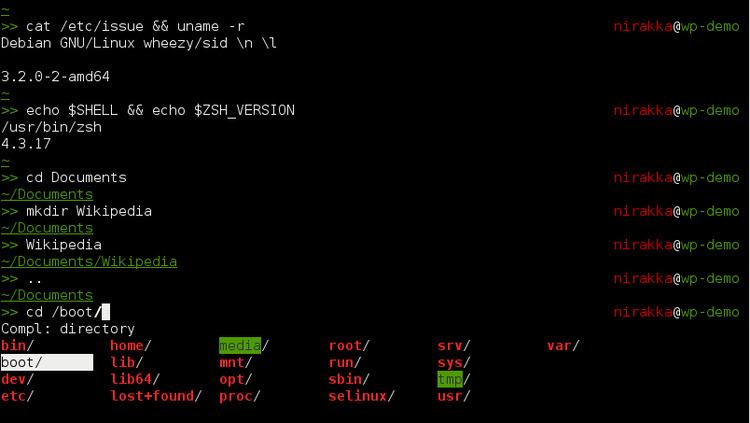Original author(s) | Written in C | |
 | ||
Developer(s) Peter Stephenson, et al. Initial release 1990; 27 years ago (1990) Stable release 5.3.1 / December 21, 2016; 3 months ago (2016-12-21) Repository sourceforge.net/p/zsh/code/ci/master/tree/ | ||
The Z shell (zsh) is a Unix shell that can be used as an interactive login shell and as a powerful command interpreter for shell scripting. Zsh is an extended Bourne shell with a large number of improvements, including some features of bash, ksh, and tcsh.
Contents
Origin
Paul Falstad wrote the first version of zsh in 1990 while a student at Princeton University. The name zsh derives from the name of Yale professor Zhong Shao (then an Assistant Professor at Princeton University) — Paul Falstad regarded Shao's login-id, "zsh", as a good name for a shell. Speakers of American English pronounce "Z" as zee.
Features
Features include:
/bin/shwhere command. Works like the which command but shows all locations of the target command in the directories specified in $PATH rather than only the one that will be used.~mydir, which then behave the way ~ and ~user do.A user community website called "Oh My Zsh" collects third-party extensions to the Z shell.
References
Z shell Wikipedia(Text) CC BY-SA
